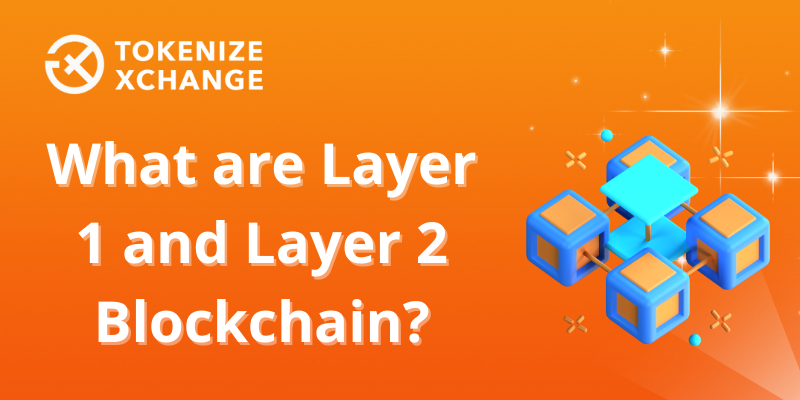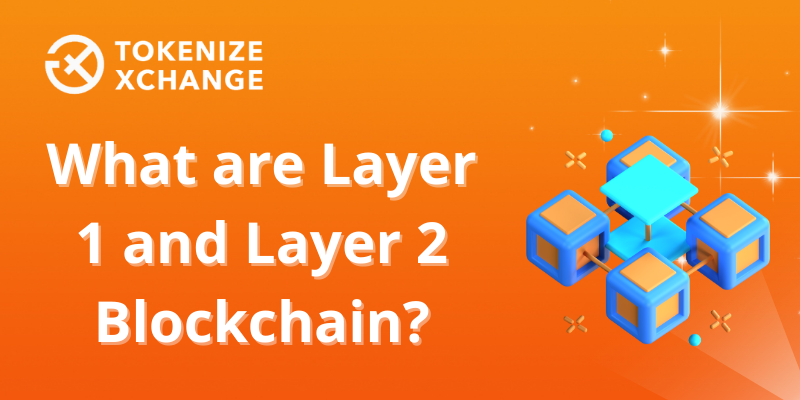
Cryptocurrencies and their underlying blockchain technology have come a long way since Bitcoin was launched in 2009 and now are establishing their roles in the global economy. While they are poised to revolutionize finance, there are challenges still to be overcome, namely scalability, security, and decentralisation of blockchain, which are conceptualized as the “blockchain trilemma” by Ethereum’s co-founder, Vitalik Buterin. The blockchain trilemma posits that while the ideal blockchain should be decentralized, secured, and scalable, it can only have two out of the three characteristics.
So, what is the scalability problem that is so significant? And what are the solutions proposed to tackle the challenges in layer 1 and layer 2 blockchain? This article introduces to you the fundamental concepts of layer 1 and layer 2 blockchains and examples of their application.
What is a Layer-1 Blockchain?
Layer 1, or the primary blockchain is the distributed database itself, the peer-to-peer network that brings all the blockchain’s nodes together into a single system, and its underlying consensus mechanisms. For example, Bitcoin’s layer 1 is the Bitcoin network, Ethereum’s is the Ethereum network, and Ripple’s is the XRP Ledger. Layer 1 blockchain could encounter network congestion issues due to the running of outdated and inefficient algorithms.
These networks sometimes make foundational changes to improve scalability. For example, Ethereum 2.0 uses a proof-of-stake consensus algorithm rather than a conventional proof-of-work algorithm. Rather than requiring miners to solve cryptographic problems, POS systems validate transactions by requiring individuals to stake collateral.
Another up-and-coming foundational change is sharding—or splitting the blockchain into smaller partitions rather than requiring all nodes to maintain the entire network. Each shard consists of its own data, making it distinctive and independent when compared to other shards. By processing transactions in parallel, sharding could significantly improve transaction throughput. Ethereum 2.0, Tezos, and other blockchains are actively exploring the concept.
What is a Layer-2 Blockchain?
Layer 2 refers to the intended scaling solutions, such as protocols or networks, that operate atop a blockchain, essentially functioning as different layers of blockchain. For example, Bitcoin’s Lightning Network or Ethereum’s Plasma and Polygon. Layer 2 is built and operates on top of an underlying layer 1 blockchain. While they still use Layer 1 features, such as smart contracts and security protocols, they aren’t burdened by the same transaction limitations, helping boost throughput to as much as 2,000 to 4,000 Tx/s (Transactions Per Second)—putting crypto on par with many centralized networks. Layer 2 can scale up the number of transactions it can process at a single time, meaning that it can accommodate an exponentially growing number of users, transactions, and data.
Example of Level 2 blockchains:
Layer 2 blockchains aim to improve the scalability of Layer 1 blockchains. Lightning Network and Ethereum Plasma are the two primary approaches endorsed by Bitcoin and Ethereum respectively, while other solutions are adopted by organizations with different priorities, like speed or security.
- Lightning Network
The Lightning Network runs atop the Bitcoin blockchain to improve speed and scalability. After locking in an initial Bitcoin payment, the network enables two users to efficiently transact with each other off the Bitcoin blockchain at a much lower cost. Then, when they’re ready, they close the channel, and a single transaction is recorded on the Bitcoin blockchain.
- Ethereum Plasma
Ethereum Plasma is a native sidechain that uses smart contracts and Merkle trees to create a limitless child chain. Each child is a near replica of Ethereum with its own consensus mechanism and business logic. Plasma keeps the transaction data and computation in the child chain and then posts the state data to the mainnet at regular intervals.
- Polygon
The Polygon Network is a sidechain that runs adjacent to the Ethereum blockchain and is compatible with other Layer 2 solutions. Using Commit Chains, the network bundles batches of transactions together using its own validation—including transactions on additional Layer 2 solutions—before returning the data to the Ethereum blockchain.
- Optimism
Optimism is an off-chain solution for dApps. Rather than running computations and data on Ethereum, Optimism puts all transaction data on-chain and runs computations off-chain, increasing Ethereum’s throughput and reducing transaction fees. With over six million transactions processed, it has saved $335+ million in gas fees.
Blockchains are becoming increasingly popular in financial services and other use cases, but scalability remains a significant concern. As the demand for cryptocurrency increases, so does the pressure to scale blockchain protocols. Since both blockchain layers have certain limitations, the solution in the future will be to build a protocol that can tackle the scalability trilemma.
The Layer 2 ecosystem remains highly fragmented, but there is a growing consensus around certain solutions. Over time, the superior solutions will emerge as winners and niche solutions will cater to specific subsets of the market. The overarching result will be lower fees and faster transaction speeds—a win-win for everyone.
